Gallery
This gallery shares glimpses into the world of Play Therapy — from carefully chosen toys and symbolic figures to the welcoming environment of The Sunflower House. Each image offers insight into how therapeutic spaces and materials support children in exploring and expressing their inner worlds.
The gallery categories are: Toys & Props, Symbols & Metaphors, and Nature & Surroundings.
Toys & Props
From superhero figures to sensory objects, these tools support children's self-expression, storytelling, and symbolic play.
* Click or tap any image to view it in more detail.
-
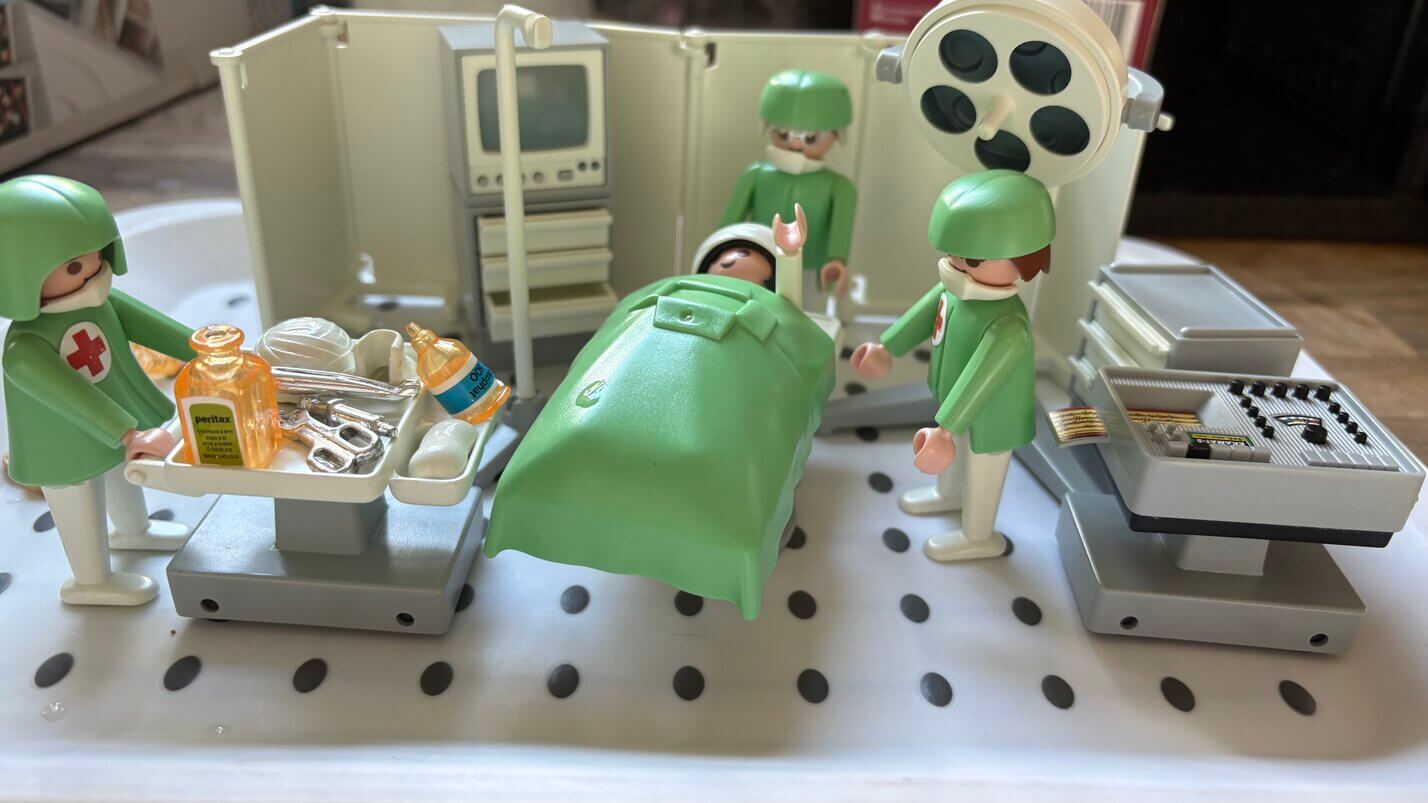
Kind Doctors & Nurses
A close-up view of a hospital scene with toy doctors and nurses, complete with bandages, scissors, and syringes — helping children feel more familiar and less anxious about real-life healthcare experiences.
-
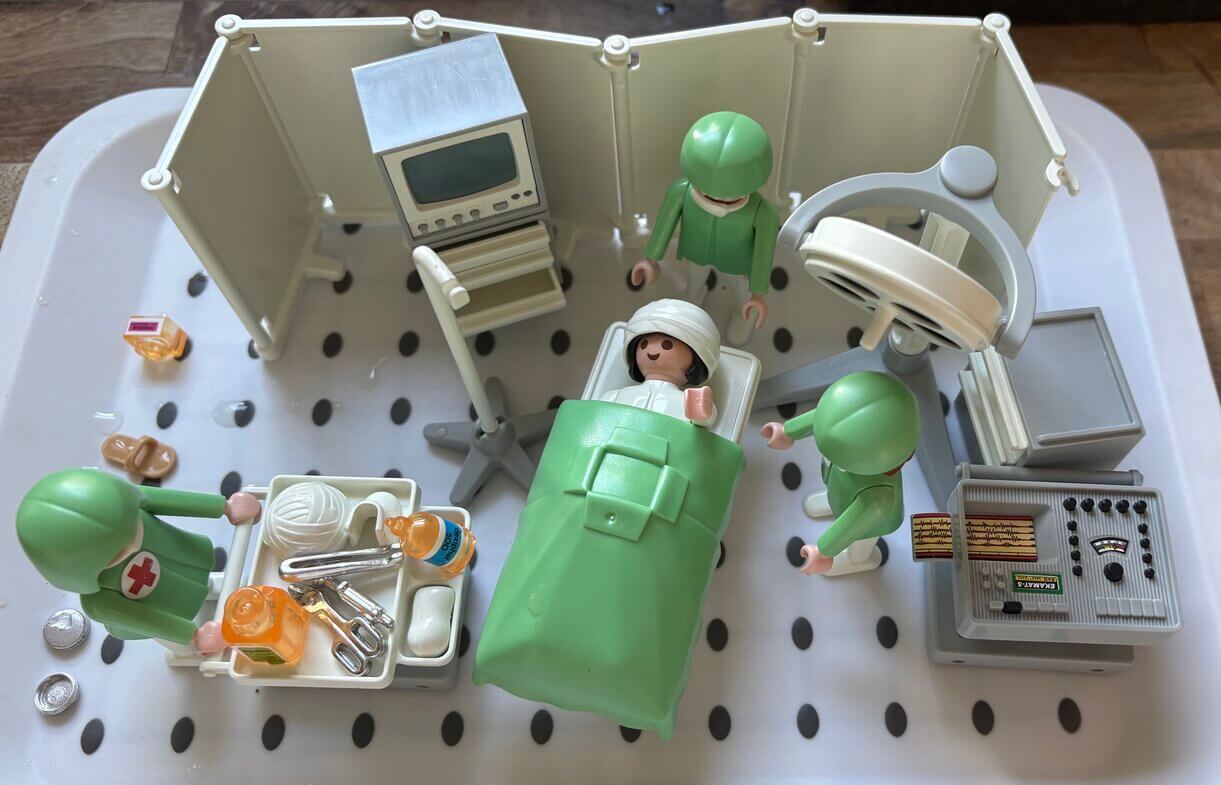
Brave Patient
A Playmobil figure tucked up in a hospital bed, with caring doctors nearby, medical equipment and instruments — offering children a safe, playful way to explore and prepare for medical scenarios.
-
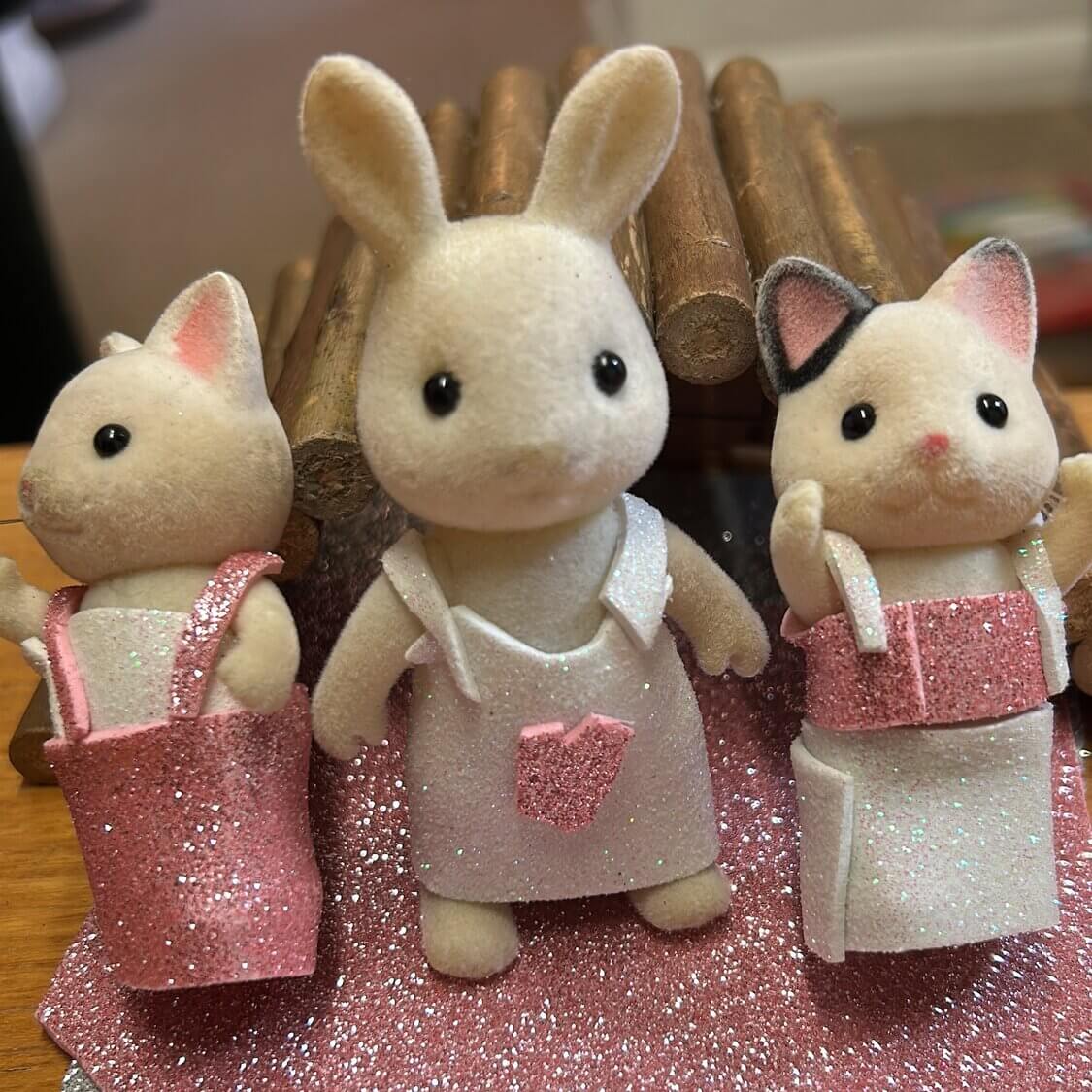
Animal Family Figures
A set of animal family figures, arranged side-by-side on sparkly mats. These types of small-world toys support symbolic play, role exploration, and expression of family dynamics in therapy.
-
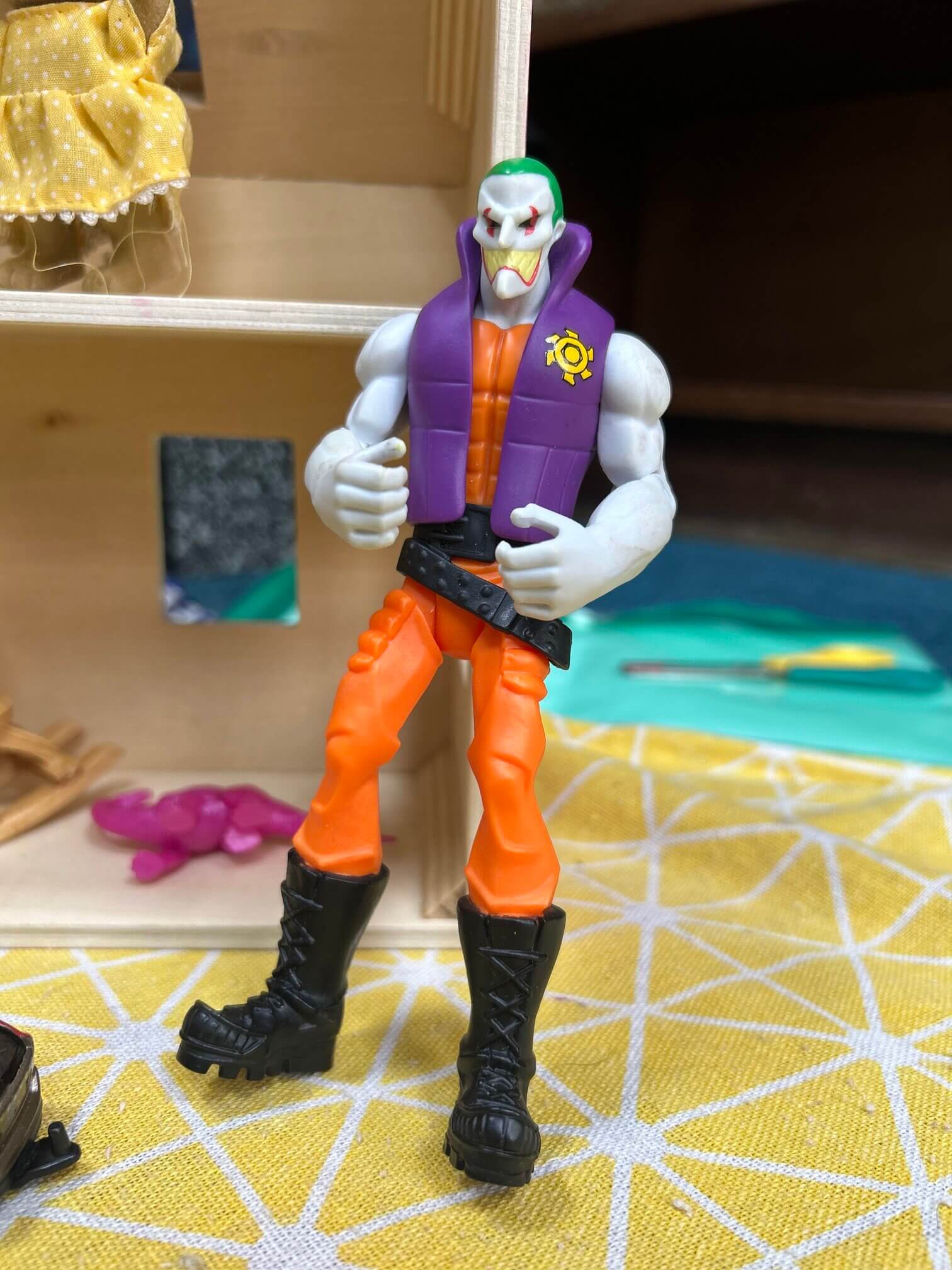
Villain Action Figure
A stylised villain character figure, used in symbolic play to explore themes like danger, fear, aggression, and power. These figures often allow children to externalise and process challenging feelings or narratives.
-
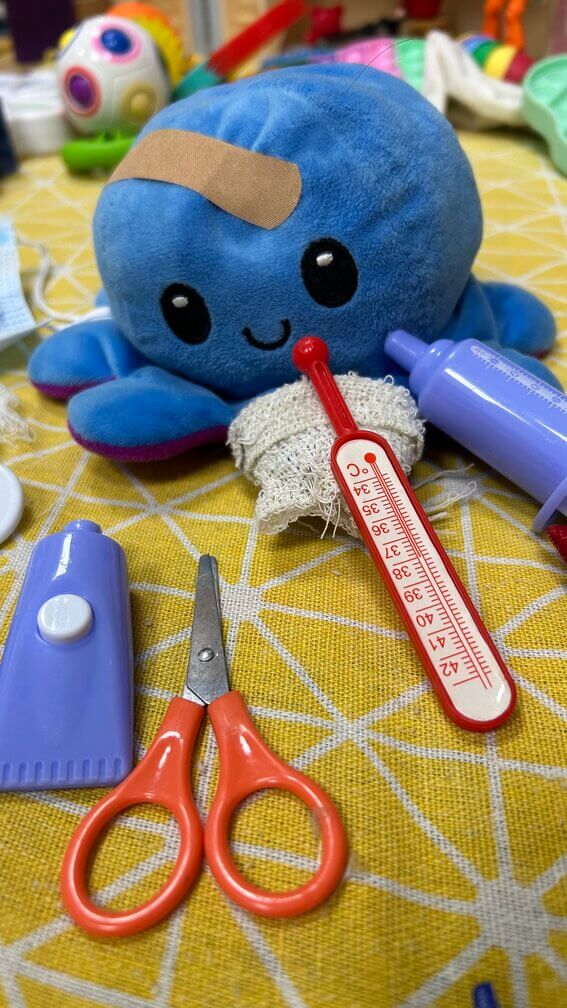
Happy Octopus
Medical play is a common theme in therapy, helping children explore fears, experiences, or roles related to care and healing. This cheerful octopus becomes both patient and play companion.
-
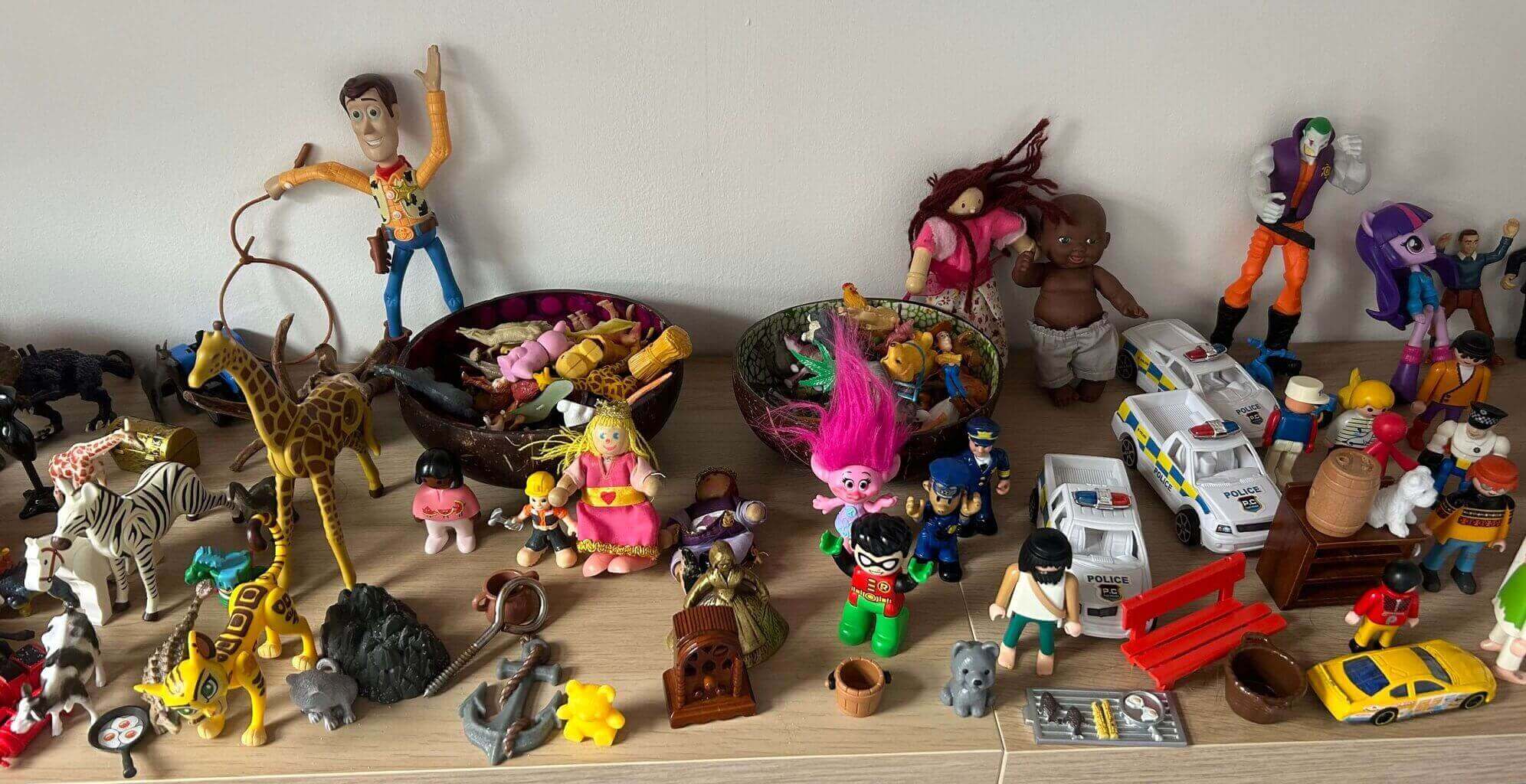
Play Figures on Shelf
A wide range of symbolic figures used in Play Therapy, offering children diverse representations of people, professions, fantasy characters, animals, and community roles. These figures support storytelling, identity exploration, and imaginative play.
-
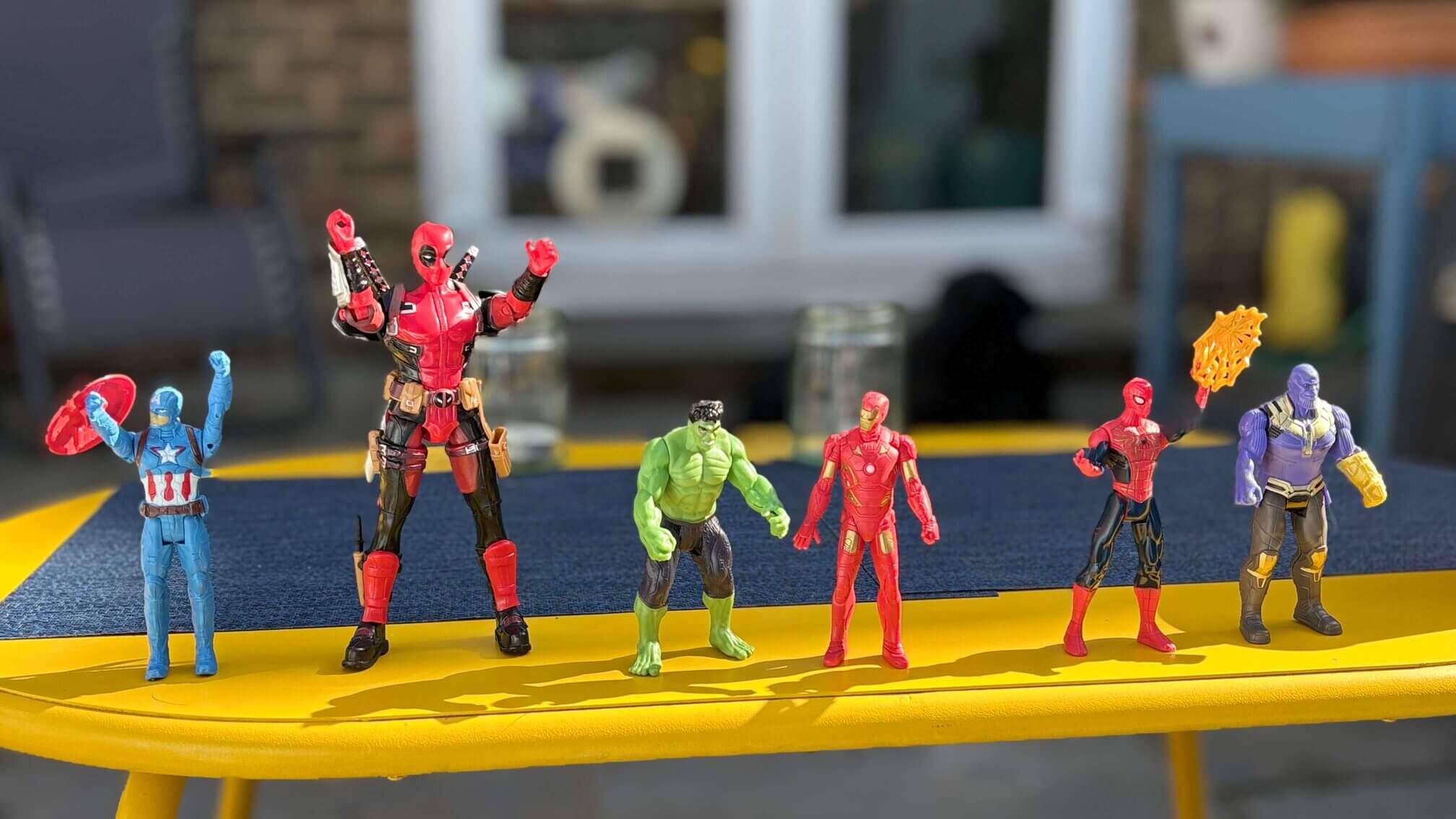
Superhero Action Figures
Superheroes often appear in children's play as symbols of strength, bravery, or hidden struggles. In therapy, they can help children explore big feelings in a safe and imaginative way.
-
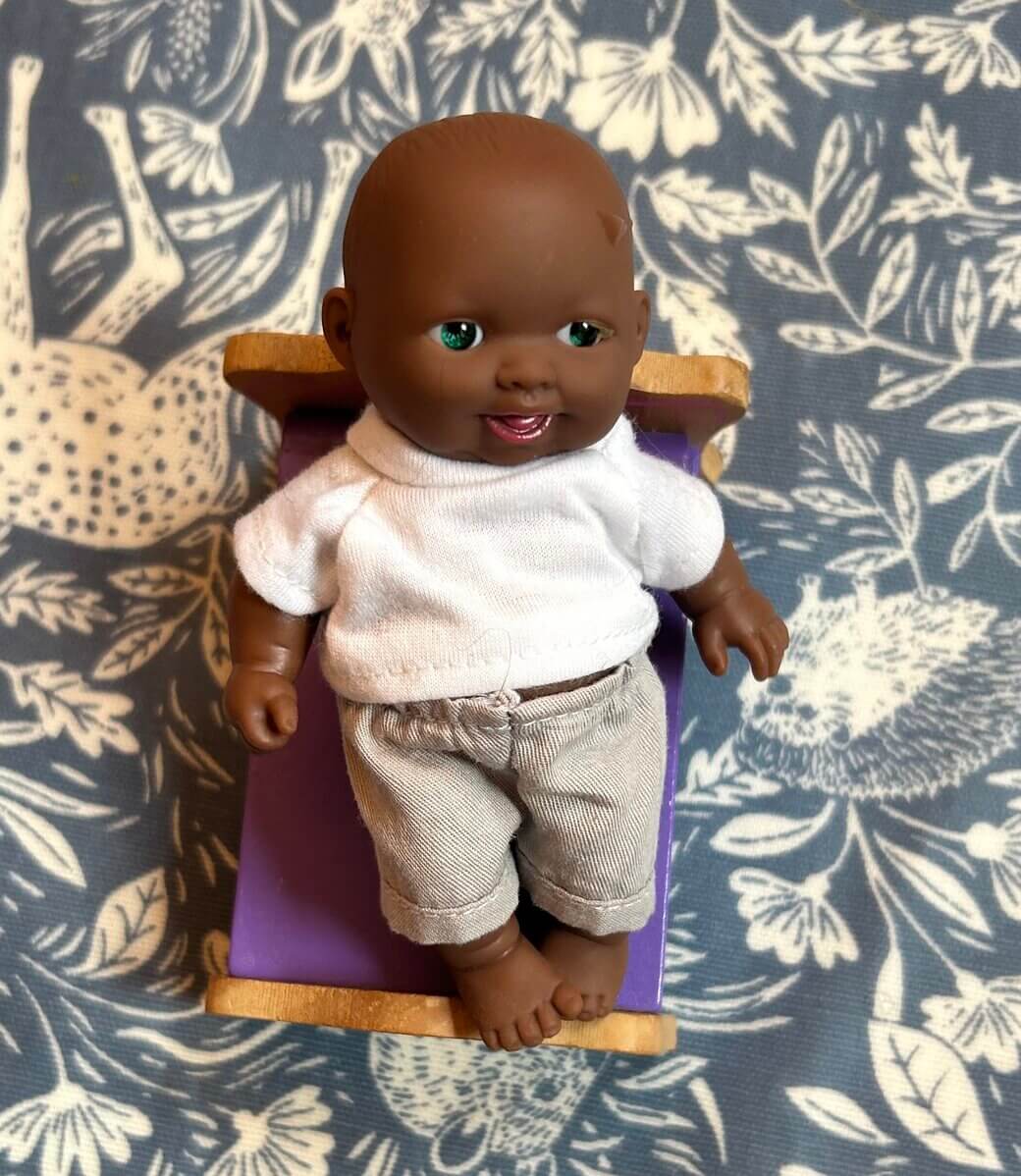
Baby Doll on Bed
This baby doll is part of the Play Therapy space, inviting nurturing and caregiving themes. It allows children to project emotions and explore relational roles in a safe, symbolic way.
-
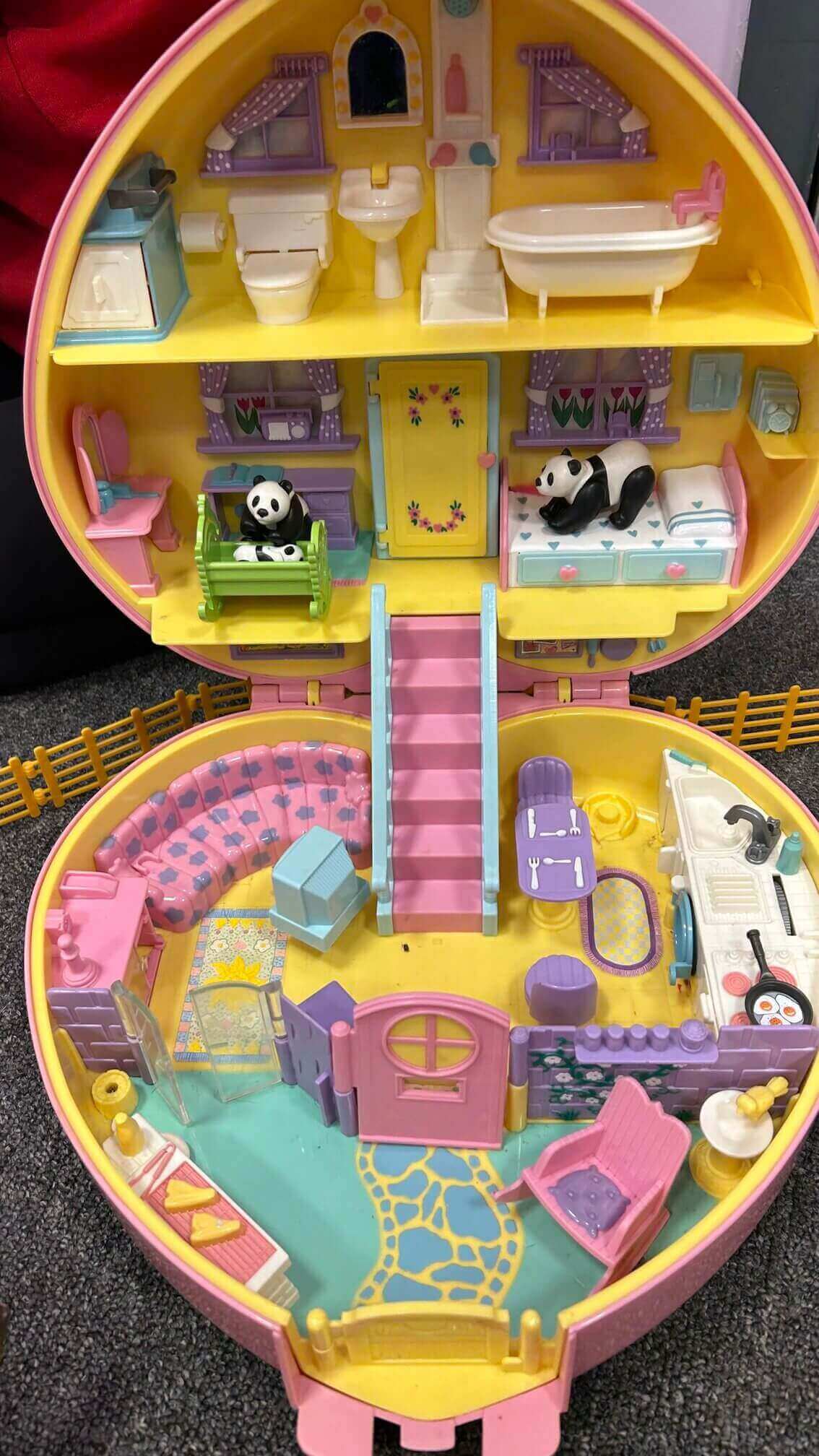
Miniature Panda House
Miniature homes like this encourage storytelling, role play, and emotional expression. Children often use play families and tiny settings to explore relationships, routines, and feelings in a safe, manageable world.
Symbols & Metaphors
Children often use play to express experiences and emotions symbolically — these images show how everyday objects can hold deeper meaning.
* Click or tap any image to view it in more detail.
-
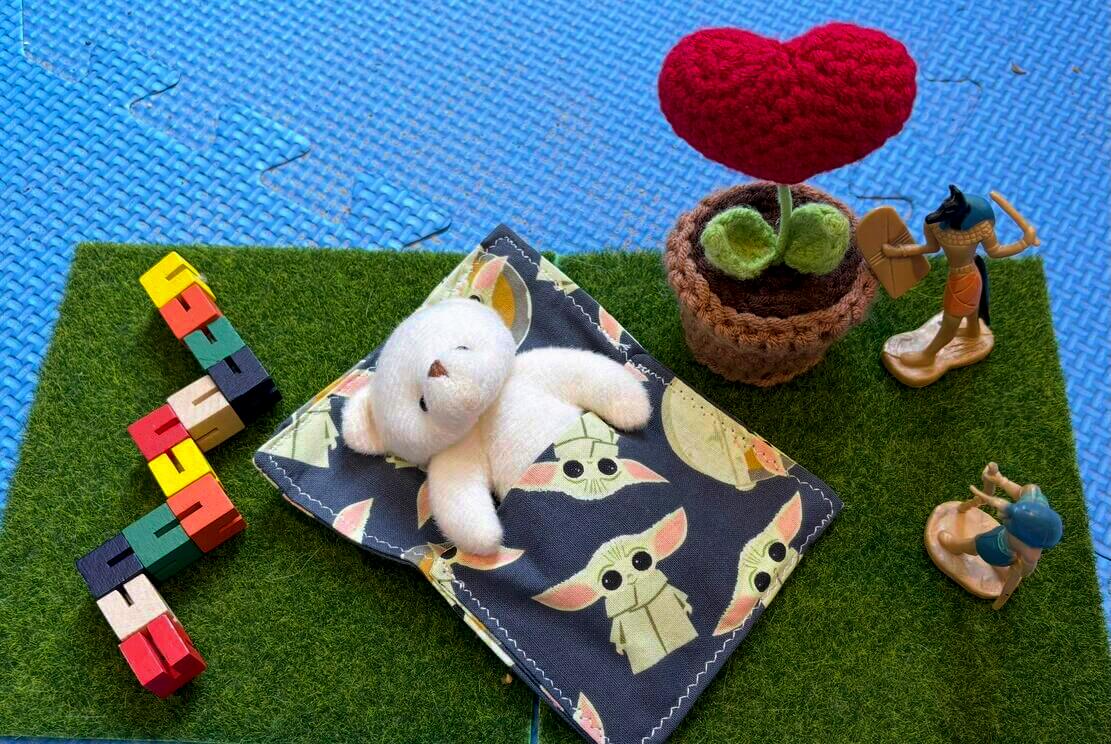
Working With Traumatised Children
This scene symbolises how Play Therapy offers safety and containment for traumatised children — allowing them to process overwhelming experiences at their own pace, through symbolic figures, nurturing images, and protective play environments.
-
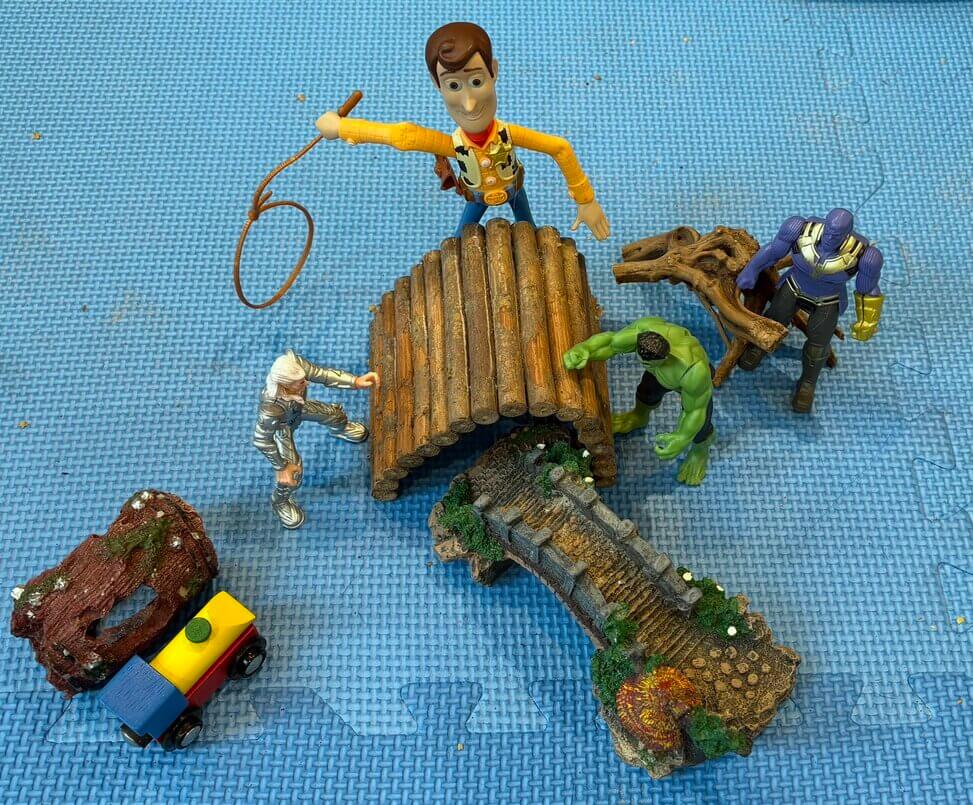
When Children Move To A New Family
Children sometimes use play to represent complex life transitions — such as moving between homes or joining a new family. In this scene, figures symbolically bridge a gap, suggesting themes of support, challenge, and adjustment during change.
-
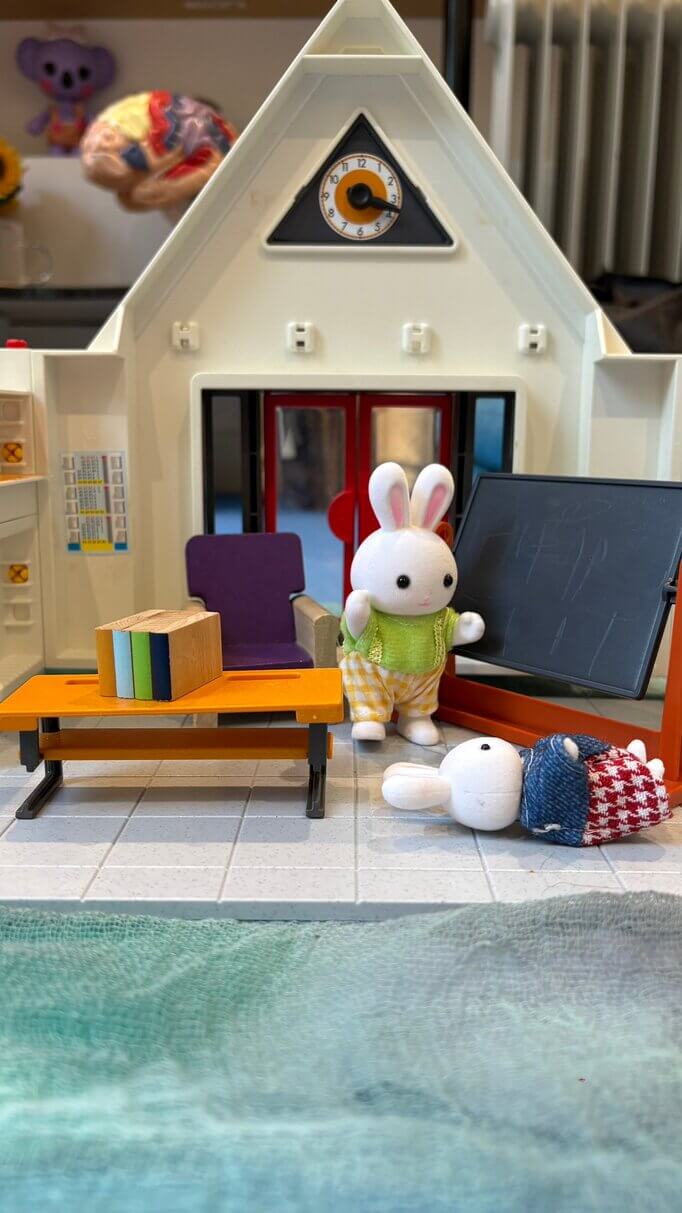
Emotional Based School Avoidance
In this school scene, a rabbit figure lies collapsed on the floor while another stands nearby — expressing how children may symbolise anxiety, overwhelm, or fear of attending school. Play therapy can help explore these feelings safely and without pressure.
-
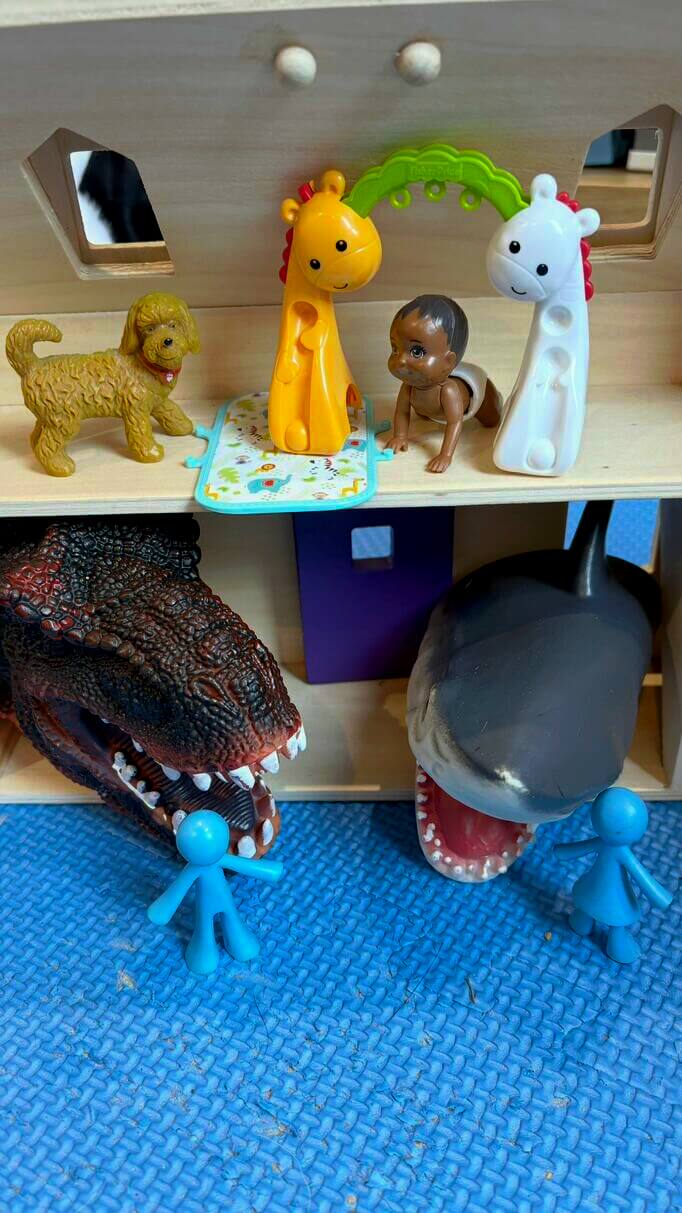
Divorce And Separation
Two contrasting play scenes in a wooden dollhouse – one calm and nurturing, the other full of conflict and danger – symbolising the emotional split and challenges that children may associate with parental separation or divorce.
-
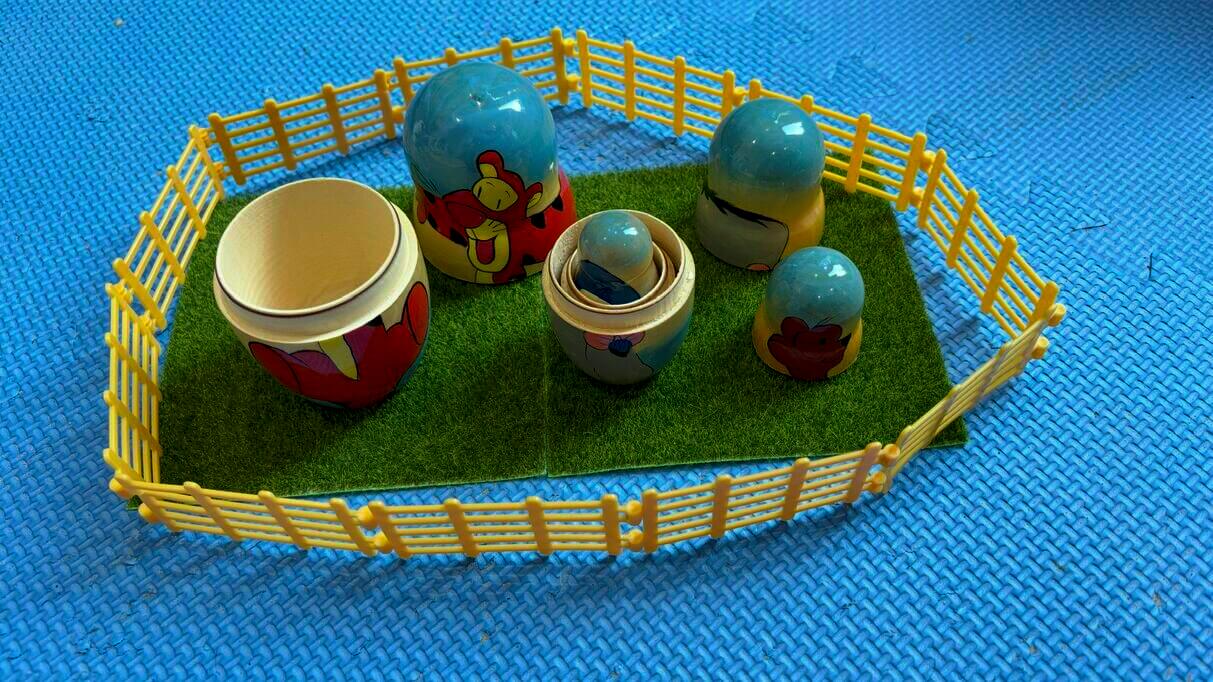
Containment And Inner Mental Space
Nesting dolls offer a powerful metaphor for containment, boundaries, and inner life. In Play Therapy, children may explore themes of identity, security, or self-protection using toys like these — visually expressing what’s hidden, layered, or protected within.
-
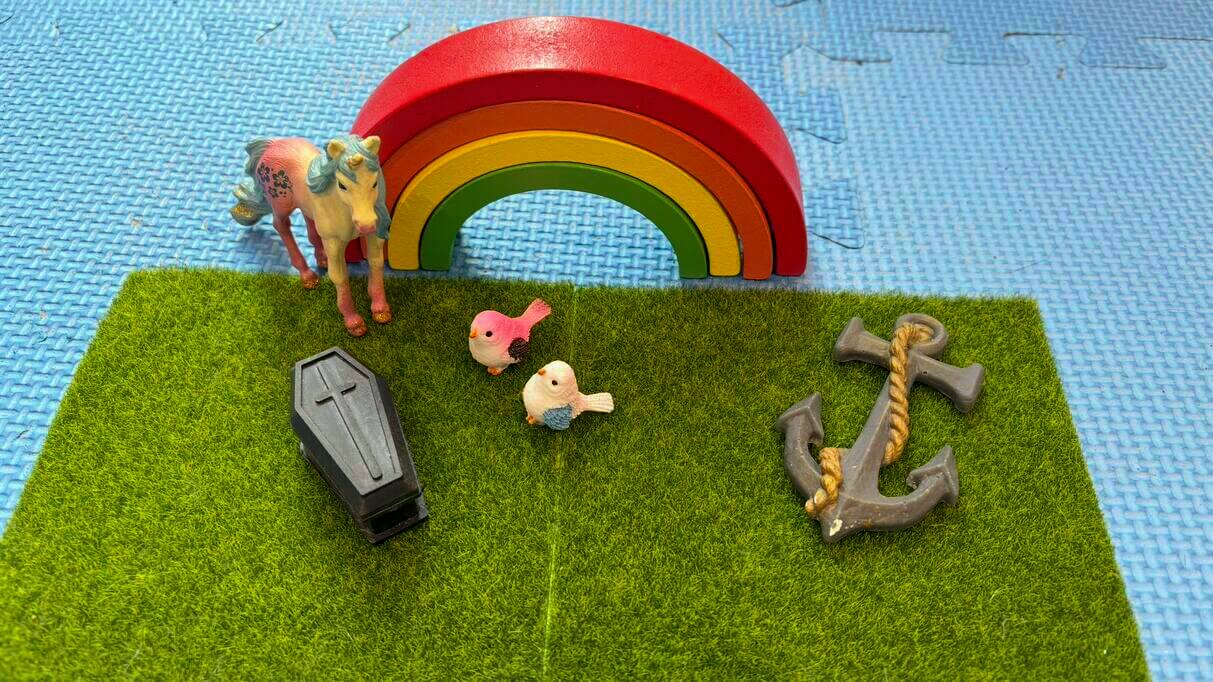
Bereavement And Loss
In Play Therapy, themes of death, grief, and transformation may emerge through symbolic arrangements like this one. The objects — a rainbow, anchor, small coffin, and animals — invite the child to explore feelings of loss, memory, and connection at their own pace and in their own language.
-
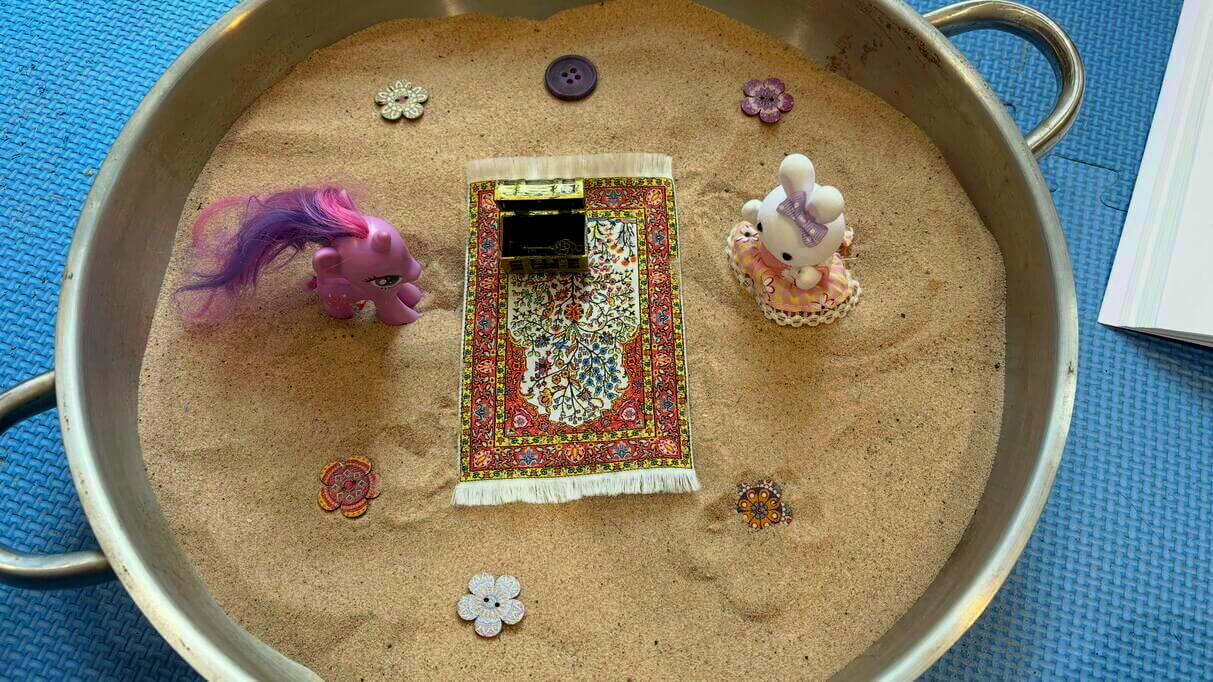
Approaches to Play Therapy
A symbolic scene arranged in a sand tray — where figures, a decorative rug, and a special box invite storytelling, imagination, and perhaps echoes of ritual or spirituality. In Play Therapy, children may explore cultural or emotional themes in ways that are meaningful to them.
-
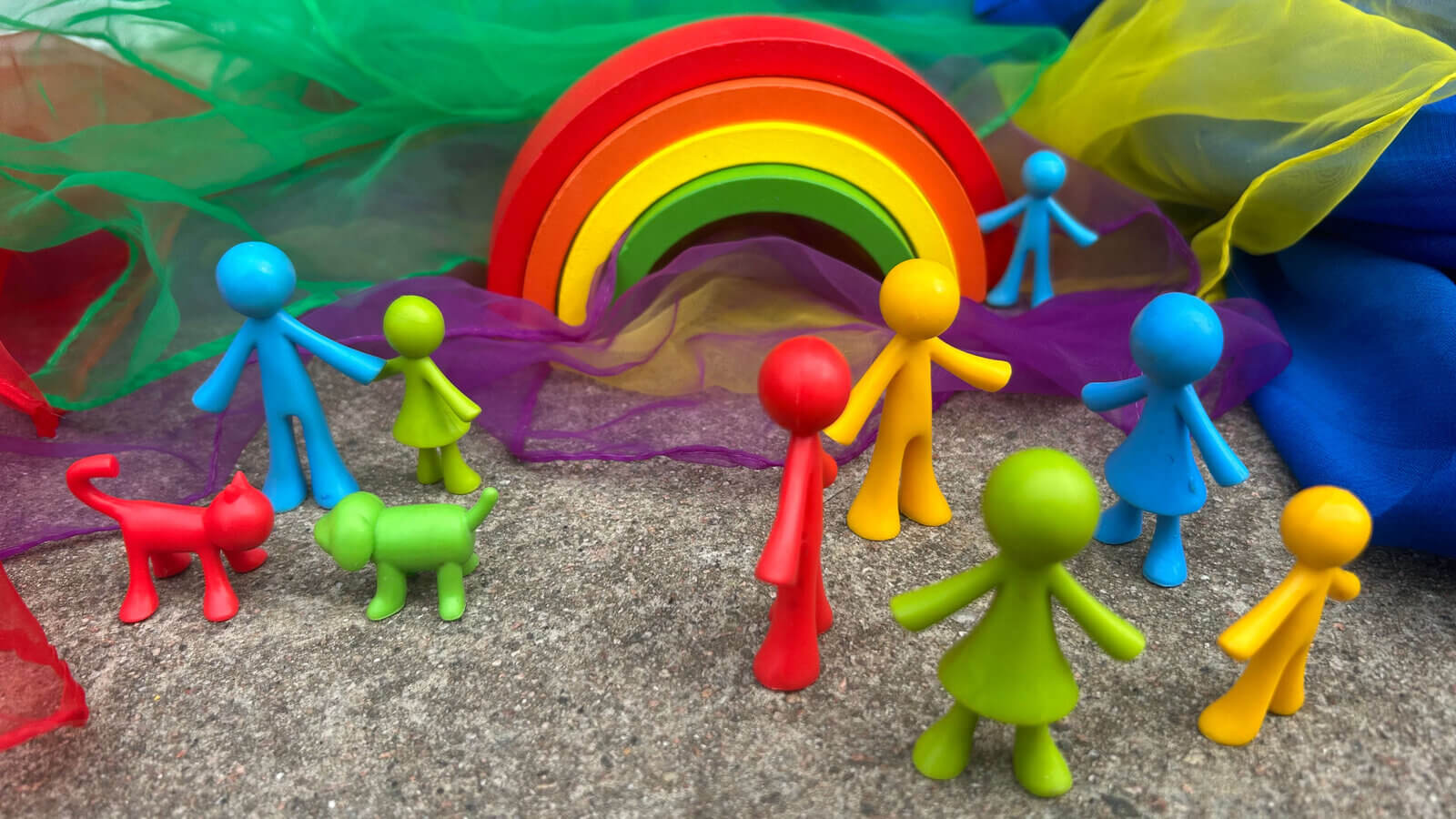
Rainbow Family Figures
These colourful figures are often used in Play Therapy to represent families, relationships, and emotions. Children may use them symbolically to express inner worlds and dynamics they can't yet articulate in words.
-
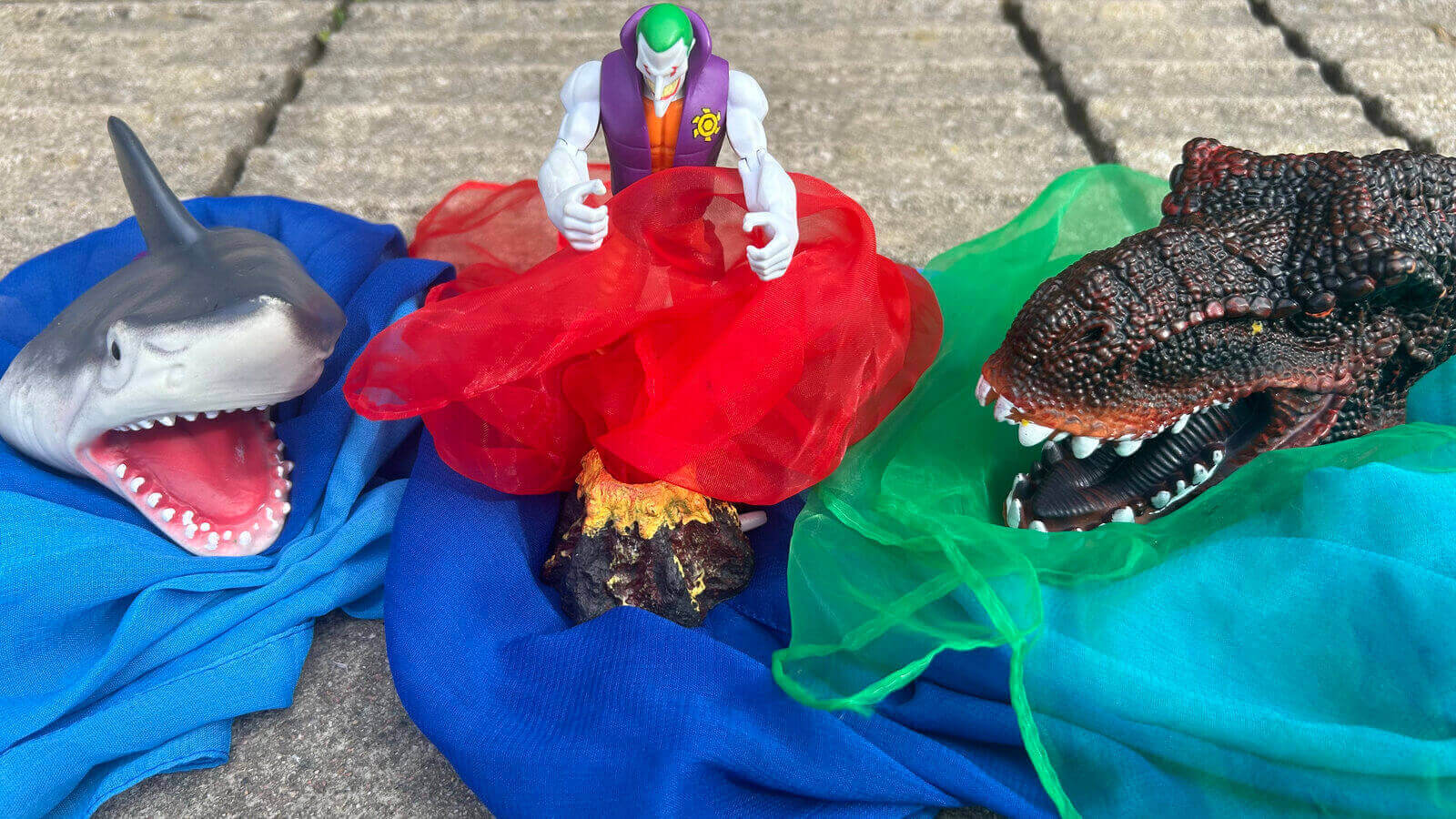
Dinosaur, Shark & Joker Scene
This scene blends symbolic elements of danger and confrontation. Children may use these figures — a dinosaur, a shark, and a villain — to act out intense feelings, challenges, or experiences that are difficult to name directly.
-
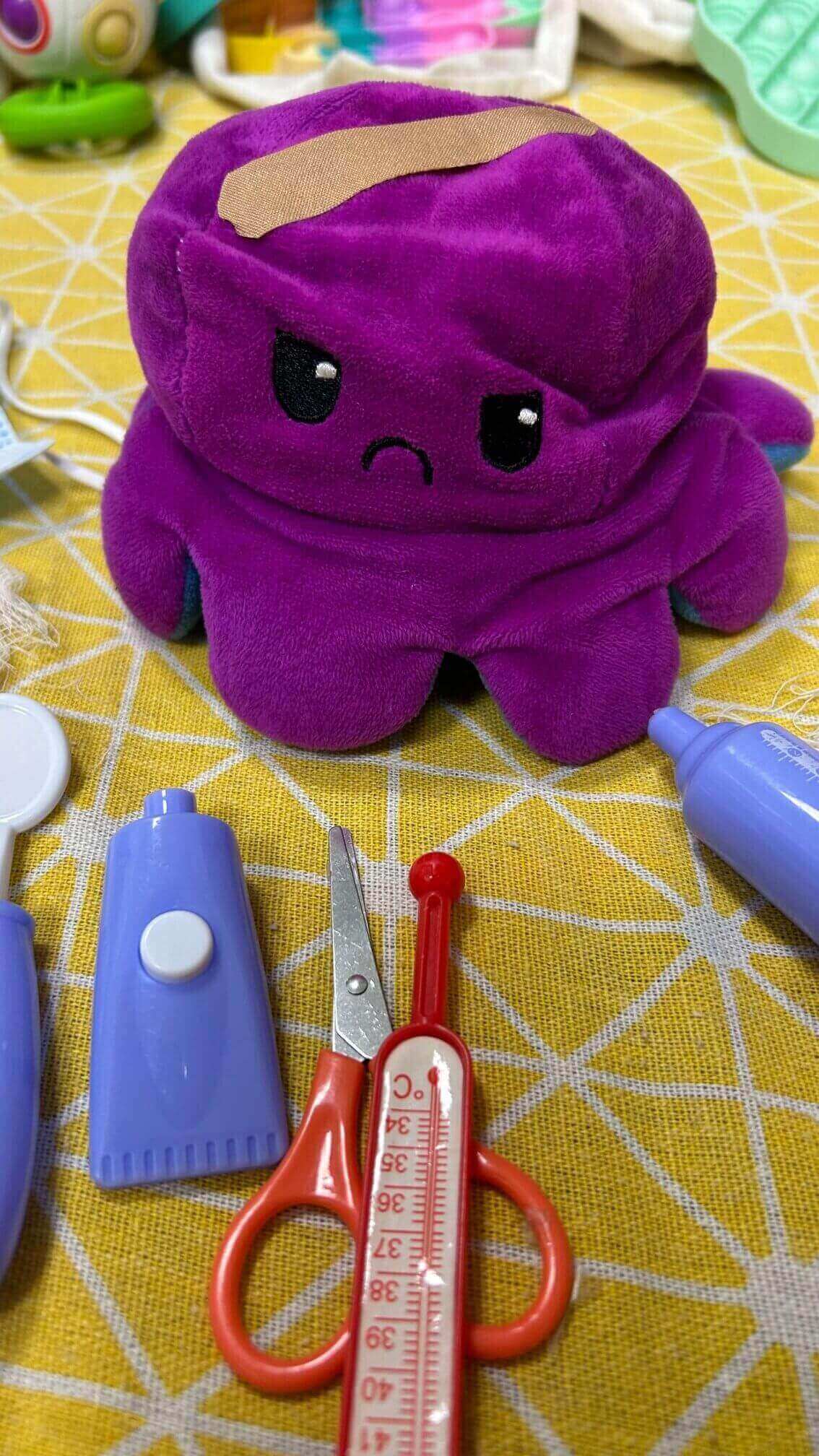
Sad Octopus
This sad octopus represents emotional expression during medical play — a common theme in Play Therapy where children explore experiences of injury, care, and recovery through role play and empathy.
Nature & Surroundings
Play Therapy often draws on the environment — light, air, greenery — to support a sense of safety, rhythm, and connection.
* Click or tap any image to view it in more detail.
-
Drawing Together
Drawing together can gently ease a child into therapeutic play — offering connection, comfort, and a non-intrusive way to begin expressing feelings, especially in early sessions or moments of hesitation.
-
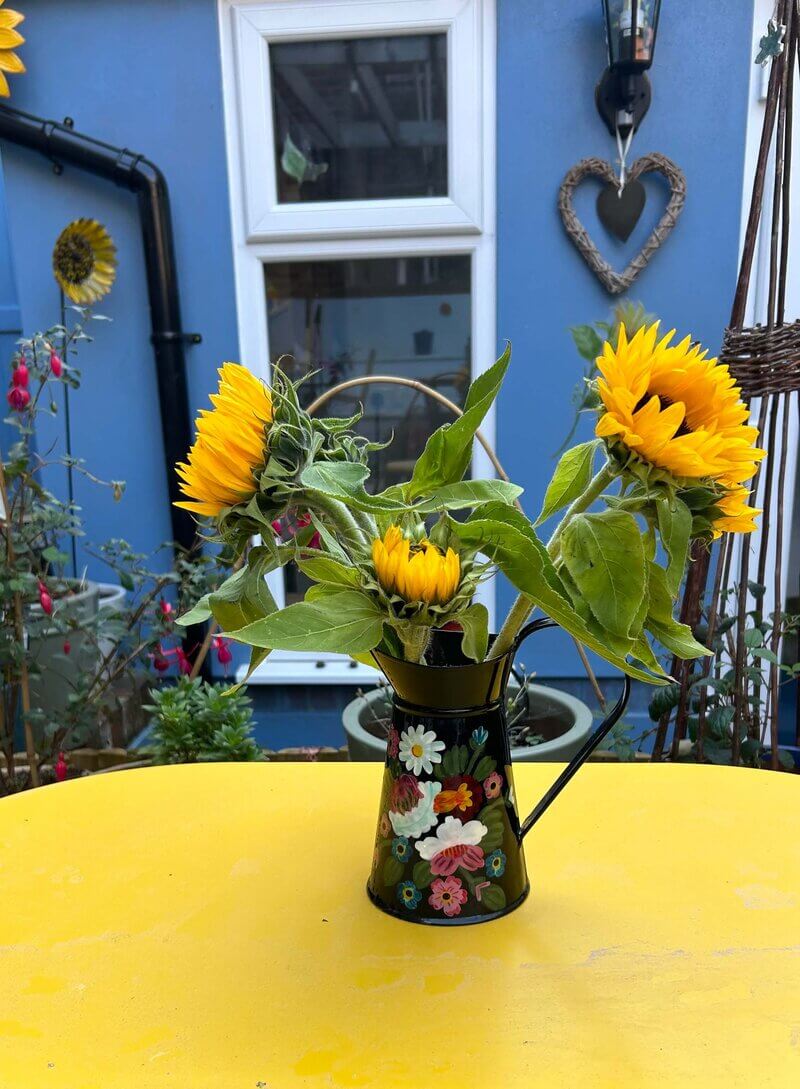
Sunflowers in Front
Sunflowers outside The Sunflower House, symbolising warmth, welcome, and the beauty of natural surroundings used in therapeutic settings.
-
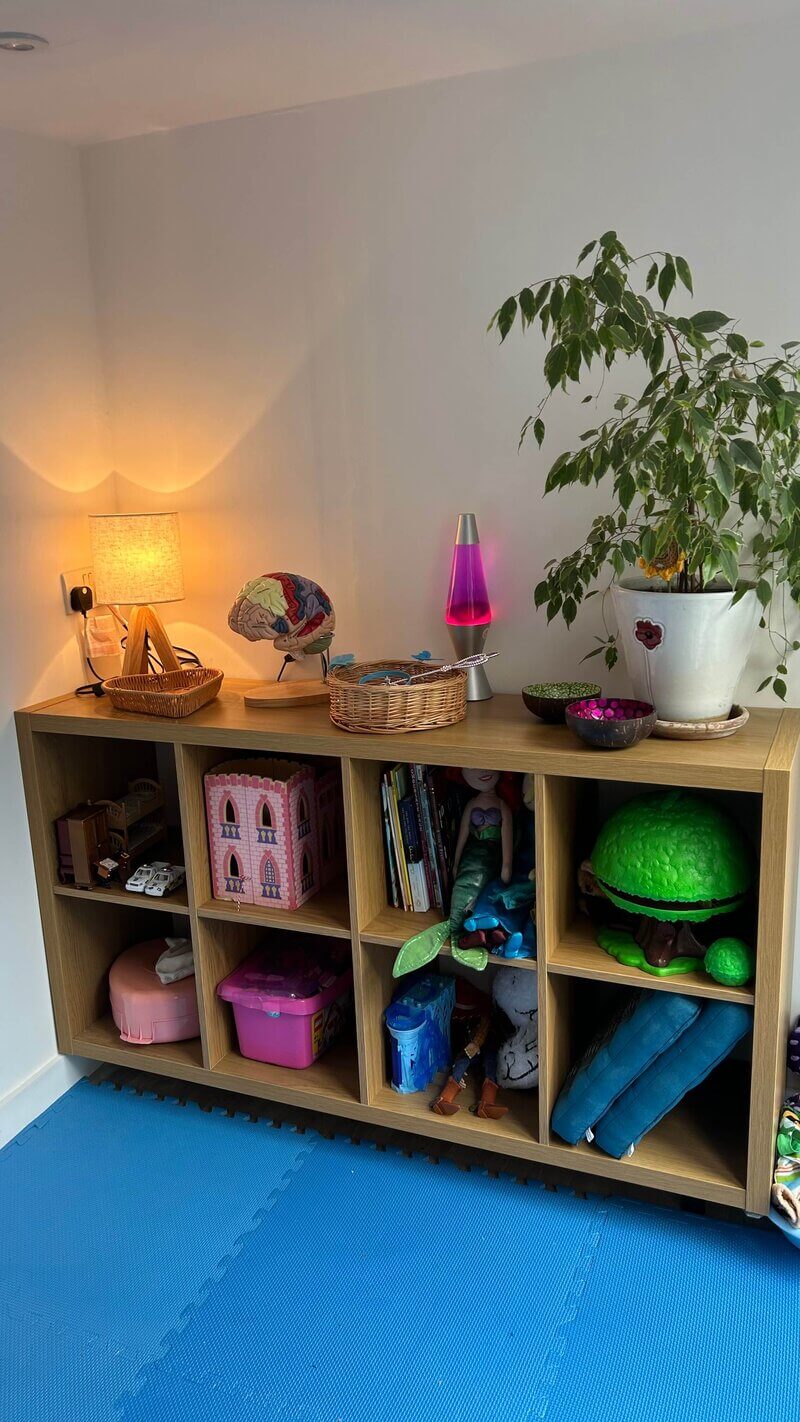
Shelf Space in Therapy Room
A glimpse into the therapy room at The Sunflower House, showing shelves filled with creative resources — from toy figures and books to sensory items and soft furnishings. The blue foam flooring is textured but firm, helping ground the space with subtle cushioning underfoot.
-
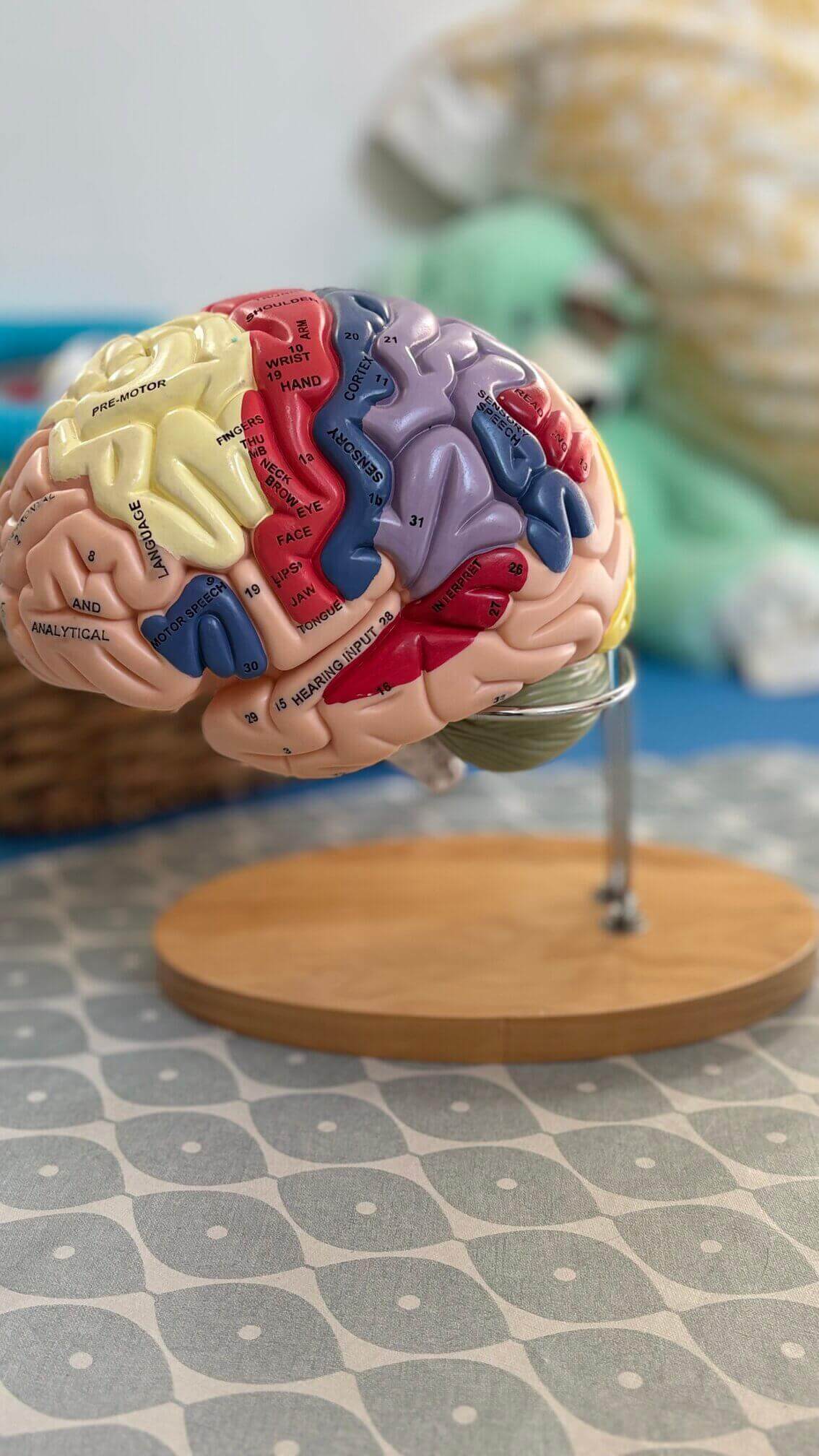
Brain Model
This model of the human brain is part of the therapy space and can be used in psychoeducation with children, helping them understand emotions, memory, and how their brains work — often empowering them to name and regulate big feelings.